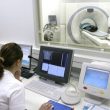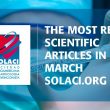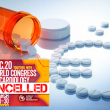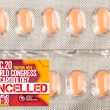Patients with cardiovascular disease infected with COVID-19 are at a particular risk for morbidity and mortality. In any case, it should be noted that most patients requiring cardiovascular care due to ischemic heart disease, peripheral vascular disease, or structural heart disease are not infected. Being prepared to face this pandemic is as important as guaranteeing<a href="https://solaci.org/en/2020/05/14/management-of-infarction-during-the-covid-19-pandemic/" title="Read more" >...</a>
The Whole Toolkit Tested in Carotid Artery Stenting
This study sought to randomly compare the double-layer Roadsaver stent (Terumo) with the single-layer Carotid Wallstent device (Boston) in association with either distal filter-like embolic protection device FilterWire (Boston) or proximal protection device Mo.Ma (Medtronic) in patients with lipid-rich carotid plaques. This is a very interesting work because there are no head-to-head simultaneous comparisons between<a href="https://solaci.org/en/2020/05/04/the-whole-toolkit-tested-in-carotid-artery-stenting/" title="Read more" >...</a>
ST-Segment Elevation Myocardial Infarction in the Time of COVID-19
This study cites the experience of 6 sites during the first month of the COVID-19 pandemic in New York. All patients included had a confirmed diagnosis of coronavirus infection and also ST-segment elevation on electrocardiography. Eighteen patients met these criteria. We are used to large randomized studies; consequently, this small registry of less than 20 people seems to<a href="https://solaci.org/en/2020/04/21/st-segment-elevation-myocardial-infarction-in-the-time-of-covid-19/" title="Read more" >...</a>
Reperfusion in the Time of COVID-19. What Has Changed?
We are living a pandemic due to the new COVID-19, but the world was already in the midst of a pandemic of cardiovascular disease. Both challenges defy healthcare systems worldwide, and the worst part is that they can coexist. Some symptoms for both diseases can overlap (such as respiratory distress) and they are unreliable, like<a href="https://solaci.org/en/2020/04/17/reperfusion-in-the-time-of-covid-19-what-has-changed/" title="Read more" >...</a>
MR vs. FFR in Non-Culprit Lesions
Magnetic resonance (MR) and fractional flow reserve (FFR) correlate moderately as regards the assessment of non-culprit lesions in patients admitted with acute myocardial infarction who underwent primary angioplasty. For a similar degree of diagnostic accuracy, we would require a visual, semiquantitative, or fully quantitative comprehensive assessment of lesions. This work, soon to be published in<a href="https://solaci.org/en/2020/04/14/mr-vs-ffr-in-non-culprit-lesions/" title="Read more" >...</a>
The Most Read Scientific Articles of March
01- Coronavirus and the Heart: How Should Cardiologists Prepare? As the number of confirmed cases increases throughout the globe, a picture is emerging as to what the direct cardiovascular effects of this pandemic may be. Read more HERE 02- TAVR: Should Transradial Approach be the Second Access Site? Courtesy of Dr. Carlos Fava. One of<a href="https://solaci.org/en/2020/04/08/the-most-read-scientific-articles-of-march/" title="Read more" >...</a>
Plaque Morphology Could Modify Functional Measurements
The vulnerable features of plaque are independently associated to functional measurements done under hyperemia far better than baseline measurements such as iFR. These findings suggest that not only stenosis severity but also plaque features contribute to functional measurements. This is a sub-study of the PACIFIC (Prospective Comparison of Cardiac PET/CT, SPECT/CT Perfusion Imaging and CT<a href="https://solaci.org/en/2020/04/08/plaque-morphology-could-modify-functional-measurements/" title="Read more" >...</a>
Virtual ACC 2020 | TICO: Ticagrelor Monotherapy in Acute Coronary Syndromes
Switching to ticagrelor monotherapy after 3 months of dual antiplatelet therapy reduces major bleeding without paying a price in terms of ischemic events, compared with dual antiplatelet therapy for a year, in patients who had acute coronary syndrome and underwent angioplasty with a second-generation drug-eluting stent. Interrupting aspirin at 3 months and switching it for ticagrelor reduces<a href="https://solaci.org/en/2020/04/06/virtual-acc-2020-tico-ticagrelor-monotherapy-in-acute-coronary-syndromes/" title="Read more" >...</a>
Virtual ACC 2020 | PRONOMOS: Rivaroxaban Superior to Enoxaparin in Orthopedic Surgery
According to this new study presented virtually at the suspended American College of Cardiology (ACC) 2020 Scientific Session and published simultaneously in the New England Journal of Medicine (NEJM), rivaroxaban is more effective than enoxaparin in preventing venous thromboembolism during a period of immobilization after nonmajor orthopedic surgery of a lower limb. After an orthopedic<a href="https://solaci.org/en/2020/04/06/virtual-acc-2020-pronomos-rivaroxaban-superior-to-enoxaparin-in-orthopedic-surgery/" title="Read more" >...</a>









